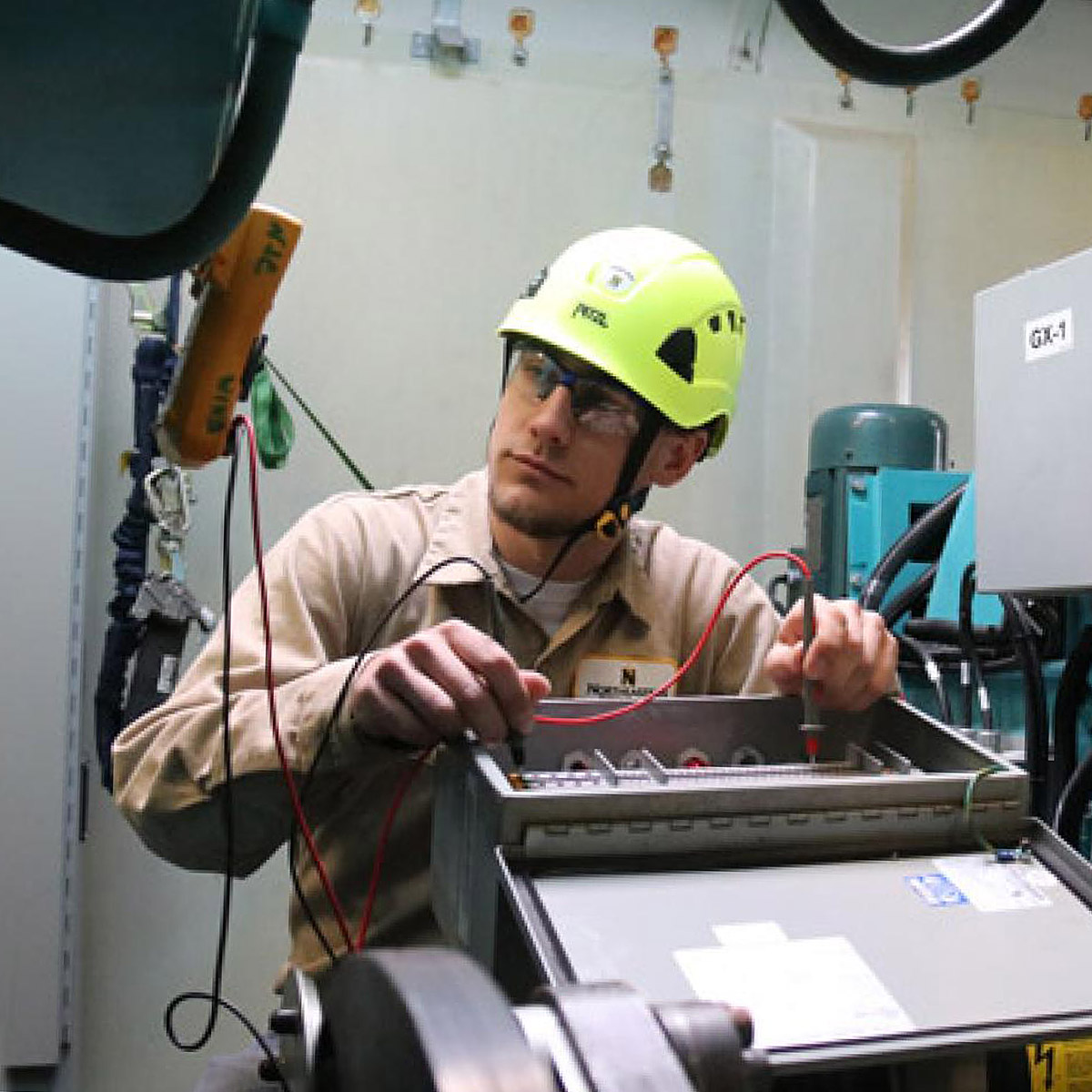Faculty


Staff


The Renewable Energy faculty bring a wealth of in depth knowledge to the classroom, from overseeing wind energy construction sites and repairing machinery in industrial settings, all the way up to taking on management roles and leading teams. Their career experience in the wind energy industry provides a deep understanding of different types of systems and allow them to support students as they develop projects utilizing this technology.
Our experienced instructors have energy production work experience, ranging from wind turbine repair and maintenance, wind energy projects, industrial repair and maintenance, manufacturing and fabrication, programmable logic controller (PLC) integration, site safety lead, management, and team leadership. With their real-world work experience firmly under their belts, they've brought an invaluable safety culture into each lesson as well – fostering not only learning but also trust!
Our Wind Energy Program provides students with core electrical, mechanical, and hydraulic/pneumatic skills which are applicable to many industries, such as advanced manufacturing, material or food processing, and industrial system repair.
Future wind energy technicians design and build projects incorporating the technologies used in wind turbines, solar energy, and battery storage systems so that they can gain an in depth understanding of the energy calculations and system basics to build and maintain equipment.

Northeastern Junior College's Wind Energy Program sets us apart from other colleges in the region. Our hands on labs and experienced faculty offer students unparalleled opportunities to learn crucial skills in wind energy. But we know that higher education is about more than just coursework. Our residence halls offer comfortable, affordable housing for students looking to be part of a vibrant campus community.
And we prioritize making education accessible, with affordable tuition and robust financial aid offerings that help students achieve their dreams. Whether you're passionate about renewables or just looking for a great student experience, Northeastern Junior College has something for you.
Upon completing the program, students are well qualified for employment in many industries inside and outside of wind turbines. Our students have found success with most of them getting jobs with the owner or operators of a wind power site or other business opportunities within a few weeks of graduation.
Employers seek out our students because they are aware of our comprehensive approach and recognize that they're getting the safety culture and technical knowledge they need to be quality technicians.

Call and talk with one of the instructors before registering for classes.
Charles Guernsey
970-521-6740
charles.guernsey@njc.edu
Jason Winter
970-521-6737
jason.winter@njc.edu
Our approach is simple; put the industry components, operating systems, and tools in the student’s hands and make sure they know how to solve problems. We use industry tooling such as Fluke meters and E-RADs to perform the same jobs that will be performed in the field. We believe that students must be able to apply what they have learned in the classroom to the real world. Our training approach accomplishes two things; it gives the students firsthand knowledge of the equipment they will be using and it teaches them how to safely and efficiently use the equipment. We have a strong safety culture and that is the single most important thing to take away from the program.
Wind Tech Freshman build the Christmas Float with the help of Auto, Diesel, and Welding students for the Parade of Lights.
Xcel Energy Colorado provides funding to support students starting the Wind & Industrial program. Xcel Energy Colorado funding provides personal protective equipment such as hard hats, Lineman gloves, and insulated hand tools.
Students are required to purchase steel-toe or composite-toe boots, work gloves, and safety glasses. Students are allowed bring their own hard hats if they prefer.
Wind technicians, on average start at $18-$22 an hour. The average work week is 50 hours and with overtime, it will average to $50,000 or more a year. The wind industry is growing and the demand for quality technicians is on the rise. In 2014, Colorado added over 400 wind turbines. The skills taught in the NJC Wind Program aren't just wind specific they will easily apply to any industrial maintenance or electrical profession.
According to the Bureau of Labor Statistics, employment of wind turbine technicians is projected to grow 45 percent from 2022 to 2032, much faster than the average for all occupations.
About 1,800 openings for wind turbine technicians are projected each year, on average, over the decade. Many of those openings are expected to result from the need to replace workers who transfer to different occupations or exit the labor force, such as to retire.
Development of taller towers with larger blades has reduced the cost of wind power generation, making it more competitive with coal, natural gas, and other forms of power generation. As additional wind turbines are erected, more windtechs will be needed to install and maintain turbines.
The U.S. Bureau of Labor Statistics lists the median annual wage for wind turbine technicians was $57,320 in May 2022. The median wage is the wage at which half the workers in an occupation earned more than that amount and half earned less. The lowest 10 percent earned less than $45,150, and the highest 10 percent earned more than $80,170.
In May 2022, the median annual wages for wind turbine technicians in the top industries in which they worked were as follows:
| Wind electric power generation | $59,890 |
| Commercial and industrial machinery and equipment (except automotive and electronic) repair and maintenance | $56,660 |
| Power and communication line and related structures construction | $54,480 |
| Machinery, equipment, and supplies merchant wholesalers | $53,890 |
Most wind turbine service technicians, also known as windtechs, work full time, and they also may be on call in the evening or on weekends.



